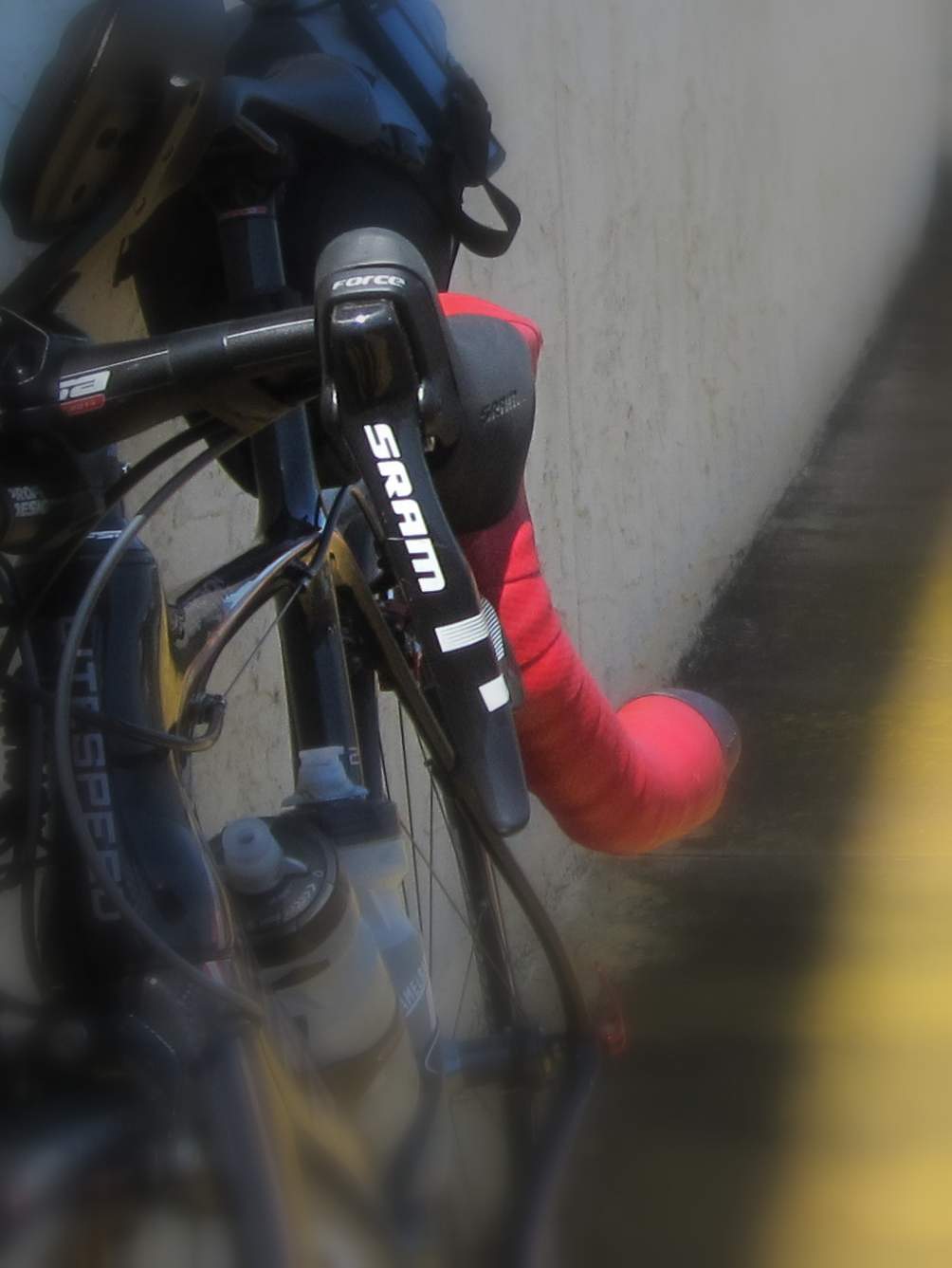Dreaded DoubleTap: SRAM Shifters Are Not Good for Ultras
I was only in Colorado and not even halfway through the 4233-mile Trans Am Bike Race when I was already cursing the SRAM Force shift levers underneath my hands.
“D*mn DoubleTap,” I muttered as I looked at my index finger knuckles that were both bloodied.
I had equipped the Super Bike with these levers for several reasons. They are lightweight, not too expensive, and good looking. SRAM Corporation is also based in my home country of USA, unlike Shimano (Japan), Campagnolo (Italy), and microSHIFT (Taiwan). The DoubleTap mechanism seemed imaginative with an elegant simplicity: one lever for both upshifting and downshifting.
All those reasons appealed to me, yet after completing the TABR and other races with these components, I concluded that SRAM DoubleTap shifters are utterly unsuitable for ultra-cycling. Here is a list of why:
- When your hands are cold, numb and weak, trying to downshift the rear derailleur can result in an upshift instead—a frustrating action when you want an easier gear. This is because to upshift the right DoubleTap lever you press it one notch, but to downshift, two notches. So when your hands are not strong enough while trying (unsuccessfully) to press in the lever two notches to downshift, an upshift occurs. This happened to me numerous times.
- The left shift lever is so stiff that even without numb hands, I often had trouble shifting to the big ring. Towards the end of the Trans Am Bike Race, I ended up having to reach in with my right hand to shift this lever, which was kind of dangerous.
- The stiff levers resulted in getting skinned knuckles on both left and right index fingers. The bloody knuckles came from the index fingers scraping against the inner sides of the brake levers as I desperately (but often unsuccessfully) tried to downshift the right lever or upshift the left lever while my fingers were weak. When my fingers were weak I had to try to compensate by rotating my entire hands more, which resulted in the scraping.
- The levers are not particularly durable. In the 2011 Boston-Montreal-Boston randonnée, a spring started to come out out of the left SRAM Rival shifter. In the 2014 Black Forest 300km Brevet, an inner pawl in the right shifter would not engage, and I could not shift the rear derailleur at all. I could then only use two gears (courtesy of the front derailleur) for the rest of that ride, and ended up having to buy a new integrated brake-and-shift lever afterward.
Note that I qualify this post by saying that DoubleTap is mainly unfit for ultra-distance cycling races, because those are the events where you are likely to have hand problems. Almost every racer in the 2015 Trans Am Bike Race had nerve damage in their hands. My left hand is still numb nearly three months after finishing the race. (See this list of TABR injuries.) [Update: my left hand regained all feeling after 7.5 months.]
My advice? For ultra-distance multi-day bicycle races, equip your bicycle with electronic shifting. (This is what Jesse Carlsson, the winner of the 2015 Trans Am Bike Race, and others did.) Or go with Shimano mechanical shifters that require less force and use separate levers to upshift and downshift.
I would even prefer a left downtube lever over a left DoubleTap shifter, like the setup on my Cannondale 3.0!
Another possibility is using indexed shifters for aerobars if you are using aerobars. Or consider going with one of the new 1×11 drivetrain systems and do away with the front derailleur and shifter altogether. So far only SRAM (with DoubleTap) offers 1×11 road componentry, so you would need to jerry rig something to go the Shimano route (using a Tampan adapter or Wolftooth Roadlink, for example).
